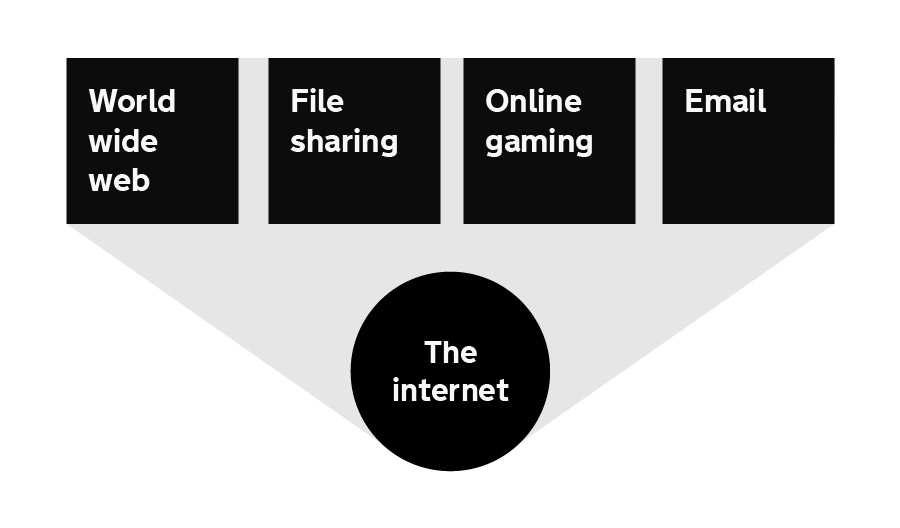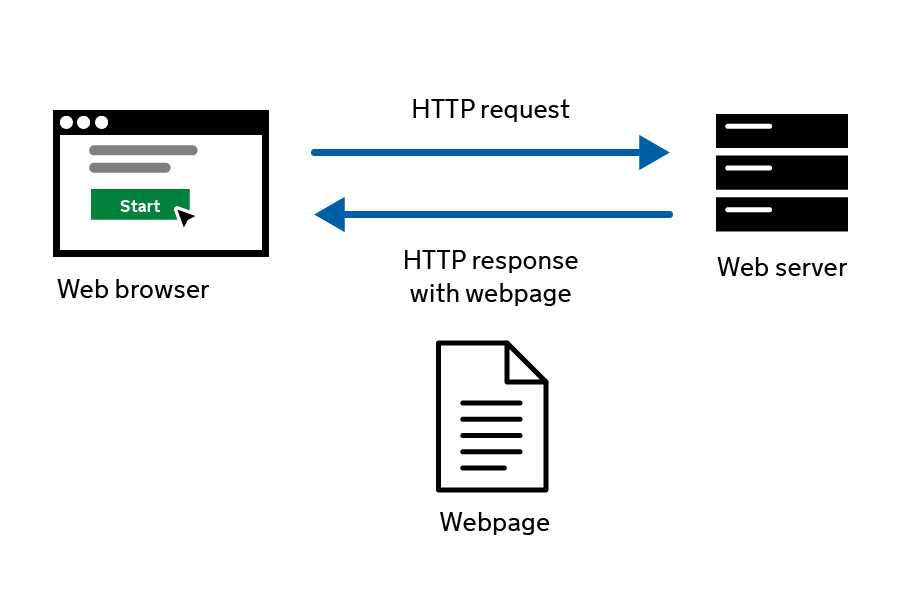The world wide web
In principle, the internet can carry any kind of data. This is part of the reason it is so useful compared to a more limited network, like a phone network which can only carry sound.
The internet carries data for things like:
- Emails
- Online games
- File sharing
But most people associate it with websites and web pages.
The idea of using web browsers to access web pages came long after the first large computer networks. The world wide web is just one of many things the internet does. One internet, many applications.

The web was an invention of a team at the European scientific institute CERN, and Tim Berners-Lee in particular. It was intended as an easy way for CERN scientists to store and retrieve documents over their computer network.
The very first website, made by CERN, is still online.
What exactly is the web?
The web is not a single invention. It’s a collection of several inventions which work together:
- The HTML markup language, the language web content is written in
- The web browser software, which requests and displays web pages from a server
- The web server software, which supplies web pages in response to requests
- The HTTP protocol, which allows browsers and servers to talk to each other
We'll explore each of these separately.

When you browse to a website in your browser, you make a HTTP request to the web server that hosts that site. The server will respond to you with a webpage, written in HTML.
Part of How the web works
- What the internet is
- The world wide web
- Making a request
- Developer tools